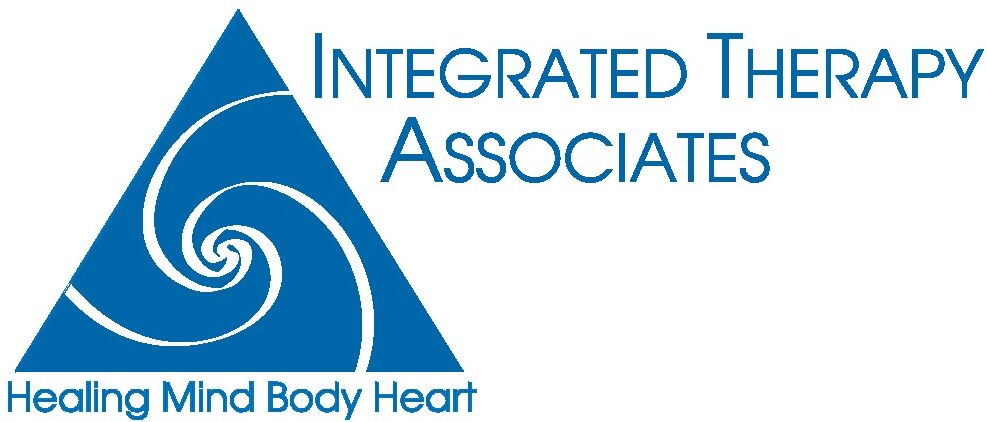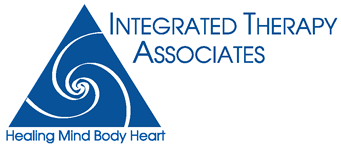Integrated Therapy Associates 3907 Wrightsville Avenue Suite 110

The following article outlines insights gleaned from my own journey into the depths of intergenerational trauma healing. Each phase represents what I now view as a milepost along the way, imbued with unique challenges and discoveries. I extend my infinite gratitude for the compassionate support and heartfelt wisdom that has been shared so generously with me long the way.
1. First we must name it- Invisible trauma- from darkness to light- from unseen to seen- Shedding Light on Intergenerational Trauma. This first stage involves legitimizing the reality of our unique traumatic experiences. In the case of the Holocaust and virtually all attempted mass exterminations, the fact that we ourselves, didn’t experience the horrors directly, in our lifetimes, can lead to confusion and even a sense of shame and doubt concerning our sensitivities to these traumas.
I spent over two decades honing my skills as a trauma therapist before allowing myself to fully realize, and then identify as, a second generation Holocaust survivor. In my search for clues and a framework of understanding, I turned first to the scientific literature and found validation through the abundance of pioneering research that has emerged over the past two decades. I believe that three key components converge to influence the individual trajectory of each multigenerational survivor: epigenetic transmission, attachment experiences, and, in many cases, first hand accounts of what family members and other constituents of the victimized groups, endured. The first two constitute large bodies of research. The latter is comprised of the narratives passed down to us through both, the stories shared within our families, and the volumes of first hand accounts documenting these experiences. Our learning is thus visceral, intellectual, and emotionally charged.
The findings summarized here are just the tip of the iceberg. For more information please access the references listed below.
A.Through her seminal work in the field of epigenetics, Dr. Rachel Yehuda has postulated a link between PTSD in Holocaust survivor mothers, and a vulnerability for development of PTSD, in their children. Furthermore, Yehuda found that that the subtype of PTSD was specific to difficulties in the interpersonal domain. This translates to difficulty trusting others within interpersonal relationships. Although PTSD is experienced in a number of domains, this finding is especially salient from the perspective of what has been lost and broken when the intent to harm was present, as is the case in all forms of targeted violence.
B. Attachment wounds- The attachment literature teaches that traumatized parents, who have not yet processed and healed from their own traumas (referred to as “reorganization” in the referenced article) are unable to form secure attachments to their children. I would like to emphasize, that this occurs through no fault of the survivor parent. The area of trauma psychology is fairly new, which means that traumatized individuals throughout time, have not had access to needed resources for their own healing, and by default were simply unable to provide secure attachment to their children. This phenomena is not at all limited to survivors of mass killings but rather, refers to all situations in which a traumatized parent has not been able to recover from their own traumas concomitant with raising children of their own.
C. Oral history and my mother’s memoir – During my childhood my family’s Holocaust history was rarely discussed. I do understand that my mother had no easy way to recount such a brutal past to her young daughter. Yet, as a sensitive child, I sensed and experienced her immense trauma and grief. I learned over time that her father had been killed by the Nazis and that she and her two brothers survived by being hidden with a Christian family. I believe it’s important to mention that I experienced resistance to knowing her story and felt an immense amount of guilt over this. I understand now that integrating the “real story” with my already existing traumatic symptoms, was the most painful part of my healing experience. This led to the next phase of bearing witness.
2. Bearing witness: During this phase we open ourselves to the reality of the traumas faced by family members and other victims of mass killings. This entails being truly present with the brutal nature of their stories. I have known, intrinsically, with every cell of my being, how crucial my single minded attentiveness is. I’m drawn to bear witness even when doing so leaves me unhinged and raw to my core. The challenge is to integrate these details without becoming consumed by them. It took me years, even decades, to realize that the intensity of my emotional response is not mine alone, but rather, that it contains its own multigenerational signature. The residue of my ancestors’ traumas lies within me, and it’s up to me to do the healing work that they couldn’t possibly do in their life times. It’s impossible to separate my pain from theirs. I bear witness because this is at the crux of healing.
3. Shifting from a focus on how they died, to a perspective that honors and reveres how they lived- From my experience has grown an appreciation for the commonalities among all of us who are multigenerational survivors, and the absolute importance of connecting meaningfully with our predecessors, our ancestors, so that we may shift away from a perspective that focuses primarily on how they died to one that both acknowledges and celebrates the glory with which they lived. In the words of Jay Lifton; “what’s key here is the transformation from the helpless victim to the agent of survival”. I’ve been extremely fortunate to have had access to written information related to three of my familial ancestors. These have taken the form of; a letter written by my great grandmother three years prior to her brutal death, a chapter of historical fiction about my beloved grandfather, and my Dear mother’s account of her own mother’s bravery and all the risks taken to enable the survival of her children. Without her heroism I would not be here. None of these individuals were victims, in the least. As we learn of our forebears’ strength, an internal shift occurs. We move away from a framework of victimhood to one of empowerment and resilience.
4. Ancestral Medicine- Imaginal work to connect us with our ancestral lines, may involve visualization exercises aimed at accessing the vastness of our lineages, including family members, beloved teachers, and other spiritual entities. In my experience, this has manifested as access to an incredible web of connection with those who came before me. In the quiet spaces we may receive the same wisdom based guidance our beloved ancestors would offer if they were still here in physical form, along with affirmation that we have descended from goodness. For many, this process, while intriguing, also involves a healthy dose of skepticism and begs the question, “is this real or am I making it all up?”. As with all imaginal work, it’s advisable to only lean in to the aspects of this approach that feel beneficial and leave aside what doesn’t fit.
5.Post-traumatic magic: Expanded consciousness and the timelessness of the soul.
Once the trauma residue has lifted and we’re able to move out of the insidious frozen state we’ve inhabited for an entire lifetime, we may find ourselves edging away from a materialistic world view to one that encompasses a more expansive sense of consciousness. In my case, although I had seen glimmers of this larger perspective for many years, an increase in openness and attentiveness have allowed for it to more fully shine through. My journey into expanded states, which began with the ancestral work mentioned above, has grown to encompass an ever broadening experience of the unseen realms. I’m keenly aware that this process of unfoldment plays out differently across individuals and that each of us is on a unique trajectory. Increased creativity, diminished duality, and enhanced connectivity are common themes. My own experiences, started with a flurry of synchronicities. A matching up of dream material (which I had written down) and external occurrences in my every day life, evolved into occasional pre-cognitive dreams, and telepathic experiences. In contemplating the core benefits of these extrasensory abilities, I’m grateful for the deepening levels of empathy and compassion I’ve been able to develop over time.
While these phases represent several distinct stages of healing from intergenerational trauma, they are not meant to denote a linear process. It is quite possible to cycle between phases over the course of our lifetimes as we remain actively engaged in the process of self actualization.
References
Firestone, T. (2019). Wounds into wisdom: Healing intergenerational Jewish trauma. Monkfish.
Foor, D. (2017). Ancestral medicine: Rituals for personal and family healing. Bear and Company.
Iyengar, U., Kim, S., Martinez, S., Fonagy, P., and Strathearn, L. (2014). Unresolved trauma in mothers: intergenerational effects and the role of reorganization. Frontiers in Psychology, 966 (5), 1-9.
Lifton, J. NPR (2023, October 8). What survivors of trauma have taught this eminent psychiatrist about hope. [Interview]. NPR
Yehuda, R. (2017, November 9). How trauma and resilience cross generations. [Interview]. NPR
Yehuda, R. (2022). How parents trauma leaves biological traces in children. Scientific American, 327 (1)), 50-55.

